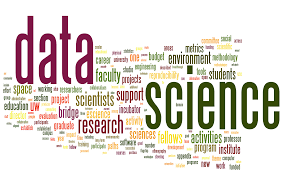The human brain is an amazingly powerful biological machine. It’s thousands of neurons control everything from our bodies to our very nature. Everything we are, or could be, hides in those cells. Neuroscientists have a basic understanding of the human brain and how it works, but a lot remains a mystery which is why some researchers have started turning to data centers, of all places, to get some answers. How can machine learning help neuroscientists understand the human brain?
What is Machine Learning?
While we’re not up to true artificial intelligence — we have yet to create any learning machines that can pass the Turing Test, regarded as the standard for true artificial intelligence — our computers get smarter every single day.
Machine learning is defined as a type of artificial intelligence designed to allow the programmed system to learn and grow from its experiences — much like the way our human mind works. A good example of one of these systems already in place is the software used for the Tesla autopilot. These electric cars utilize a cloud-based machine learning system.
If one Tesla encounters an obstacle in the road or a new traffic pattern, it can upload that experience to the cloud and all the other Tesla’s in the area can download that new information, improving their software and learning from the experience of one of their fellows.
How can this kind of machine learning help neuroscientists understand the brain?
Data Management and Machine Learning
Machine learning has two different things it can offer neurologists — data management and direct studies.
As of right now, machine learning is used most often for data management. When paired with predictive algorithms, these programs can sift through massive amounts of data and in many cases find connections or patterns that a human analysis may have missed. This isn’t a slight against the human researchers by any stretch of the imagination, just a simple statement of fact — the human mind is a powerful tool, but it can’t process data as quickly as a computer can. Not yet, anyway.
These programs can be told to look for a specific type of pattern, or they can simply be released to work their magic on a data set, finding any patterns that exist in that particular set.
Understanding Our Gray Matter
Currently, our best tool for understanding how the brain works is known as functional neuroimaging. It combines an MRI with an EEG to observe the functioning of the brain in real time, depending on the activity. It’s been used to monitor the brain activity of writers during the act of creation, of musicians while playing their instruments and even singers while listening to music. This gives the researchers a good idea of how the brain works under different stimuli.
These machine learning programs are, in essence, creating a mind. Its neurons and pathways might be digital, but we’ve created these programs to mimic the growth of the human mind. We can study the simpler brains of smaller creatures — fruit flies and other larvae — to begin to understand how the brain works, but these invertebrates simply don’t have the sort of processing power the human mind does. Drosophila larva, a popular choice for these studies, has about 15,000 neurons in their simple brain. The human mind contains over 86 billion neurons, and this is where machine learning comes in.
We can create programs that mimic the human mind and its 86 billion neurons. These programs can be trained to learn and grow in a way that mimics humans — or even exceeds our capabilities if all goes right. It’s simpler than studying a full-grown human mind. Most of the ones they would be studying are fully developed — with a machine learning program a neurologist can study the growth of a mind from the first neurons that form.
There’s always the fear that artificial intelligence programs like these could take over the world and annihilate us, thanks to popular movies like the Terminator series, but in reality machine learning could change the way we do so many things. Right now it’s changing the face of neurology, but in the future it could potentially change the way we study the world around us.






![Big data and Parkinson’s disease – Causes, symptoms and treatments [Infographic]](https://crayondata.ai/wp-content/uploads/2022/05/infographic-1-2.jpg)





